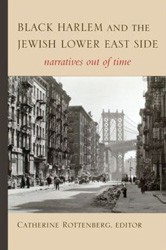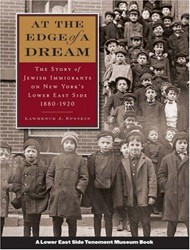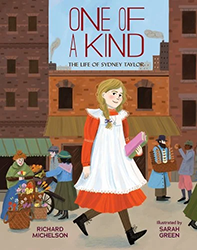“The end I seek is honest. I only want to live,” Fanya Ivanowa thinks to herself midway through All I Could Never Be, Anzia Yezierska’s 1932 novel. Yezierska’s own background is just as purposeful as her determined protagonist’s; indeed, this novel includes many autobiographical details. After arriving in America in 1893, Yezierska grew up on the Lower East Side and spent her career writing about the lives of female Jewish immigrants. She rejected a lucrative deal writing screenplays to continue publishing novels, stories, and essays that dignified immigrant identity.
Fanya, a young Polish immigrant, is an astute observer of the world around her; her dream is to write. When the philanthropic intellectual Henry Scott takes a personal — and romantic — interest in Fanya, recommending her for the job of translator for an academic project, Fanya is smitten. Their love affair is complicated; Fanya, whose identity is strongly tied to her experience living in New York’s immigrant community, perceives Scott’s keen interest in her as compassion, but to a modern reader it looks a lot like fetishization. After it becomes clear that the affair can’t last, Fanya spends most of the next decade developing an accomplished career as a writer, although every success is overshadowed by Scott’s absence from her life.
Fanya and Scott’s affair is intriguing and refreshing, particularly because it comes without a hint of guilt on Fanya’s part for her interfaith romance. The characters connect on an intellectual level, flirting over mailed poems and debates about moral justice. Eventually, though, reading about their romance grew draining. Fanya’s unique character might have been better served had Yezierska included more of Fanya’s interactions with her fellow citizens. In an attempt to escape the memory of Scott, for example, she takes a job at a diner where she hopes to unionize her fellow waitresses. The scenes of Fanya and her coworkers arguing, over abandoned dinner plates, about how to best deal with a deadbeat boss, are memorable and compelling.
The most intriguing character in the book is Helena Hoffman, a librarian friend and mentor of Fanya’s. Helena occupies a space that is inaccessible to Fanya: an older, single woman, attentive to both Jewish tradition and art, two ideas that Fanya seems to feel are incompatible. (Toward the end of the book, Fanya visits Helena on Yom Kippur, and notes the Rodin figure on Helena’s desk.)
In the end, Fanya abandons New York City for a small New England village. The scenes in which she struggles to determine her role in the unfamiliar town (whose inhabitants have disappointingly familiar biases) are intriguing. Fanya feels distant from her neighbors — not because she is Jewish, as one might expect, but because of their disdain for the poor. The strength of Fanya’s character, especially given the time period, is remarkable. Her gender never prevents her from speaking up against injustice.The reader can imagine that Fanya, like Yezierska, will continue seeking honest ends through extraordinary means.
Adina Applebaum is a Program Associate at the Whiting Foundation. She lives in New York.




